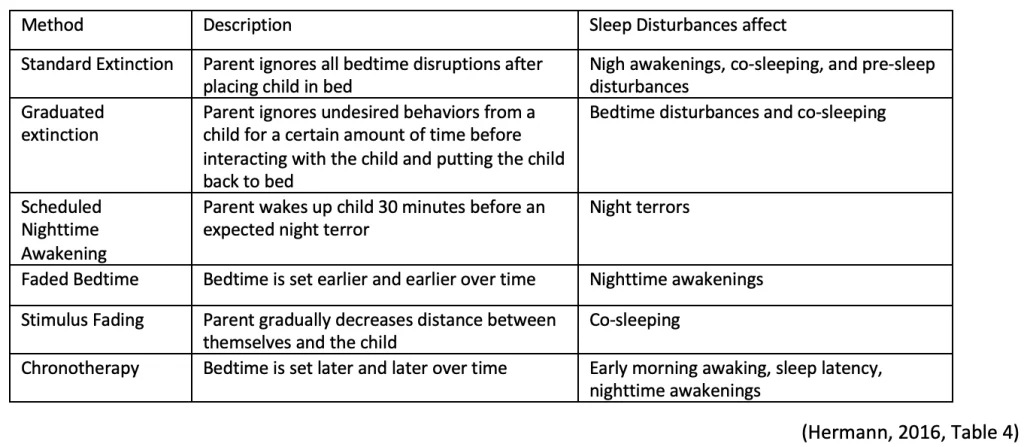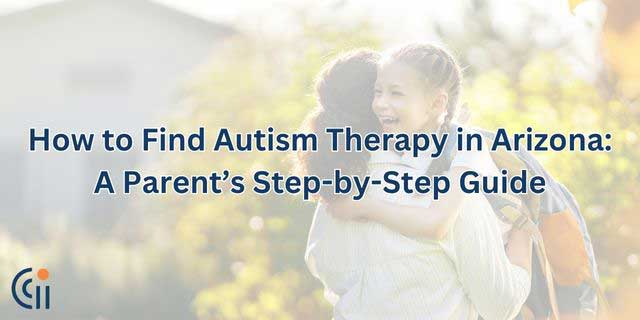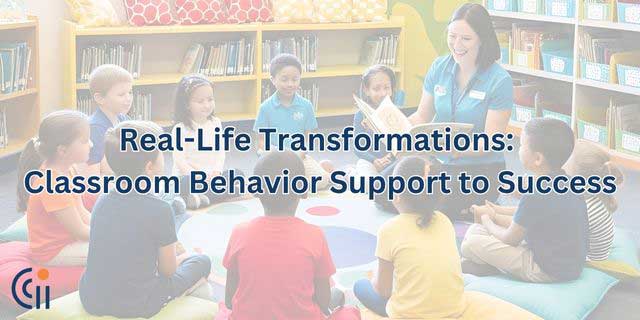Approximately 52-82% of children with Autism Spectrum Disorder (ASD) experience sleep disturbances. These sleep disturbances include bedtime resistance, sleep onset delay, frequent waking up throughout the night, co-sleeping, waking up early, reduced amount of time spent asleep, and excessive sleepiness throughout the day (Hunter et al., 2020). This can quickly become exhausting for both children with ASD and their parents.
The importance of sleep.
Sleep is essential because it affects brain development, memory, mood regulation, and behaviors. A lack of sleep can have a negative impact on feelings of anxiety and depression, inattention, irritability, aggression, not wanting to follow directions, self-injurious behaviors, and hyperactivity. Children with ASD who experience sleep disturbances have higher rates of social impairments, repetitive behaviors, lower motor functioning, and more severe problem behaviors throughout the day (Hunter at al., 2020). Spectrumnews.org shares that it takes children with ASD an average of 11 minutes longer to fall asleep.
What is Insomnia?
There are many different sleep disturbances and sleep disorders a child with ASD may experience. The most common one is Insomnia. Insomnia is defined by consistent and persistent issues falling asleep and staying asleep, which impairs daytime functions. The prevalence of Insomnia in children with ASD is 2-3x higher than in typically developing children. Insomnia is the primary sleep disturbance concern parents have and is often why medical help is sought. Insomnia can have very adverse effects on attention, depression, irritability, memory, and hyperactivity (Souder et al., 2017).
So, what do I do now?
First and foremost, speak to your child’s doctor. They will be able to guide and direct you on further interventions. In addition, creating a bedtime routine may aid your child in falling asleep. Our blog, Creating a Practical Bedtime Routine for Your Child with Autism, expands on how to do so.
Another form of intervention is behavioral intervention. These are interventions that are based on learning and behavioral principles with the goal of developing positive and effective sleeping habits (Sanberg et al., 2018). Below is a chart explaining the most commonly used behavioral interventions for sleep disturbances.
What do these terms mean?
- Aggression: Any instance of forceful contact with sufficient force to leave a mark or make a sound audible.
- Bedtime Resistance: The child stalls or refuses to go to bed at the right time
- Co-sleeping: the practice of parents and young children sleeping in the same bed.
- Early morning awakening: when a person wakes up too early in the morning and is unable to fall back to sleep
- Sleep Onset Delay: a disorder in which a person’s sleep is delayed by two hours or more beyond what is considered an acceptable or conventional bedtime. The delayed sleep then causes difficulty in being able to wake up at the desired time.
- Motor Functions/Functioning: the ability to learn or to demonstrate the skillful and efficient assumption, maintenance, modification, and control of voluntary postures and movement patterns.
- Nighttime awakening: having difficulty returning to sleep after waking up during the night or very early in the morning.
- Night Terrors: episodes of intense screaming, crying, thrashing, or fear during sleep that happen again and again, usually in children ages 3 to 12, also known as sleep terrors.
- Self-Injurious Behaviors: an individual engages in that may cause physical harm, such as head-banging or self-biting
- Sleep Latency: also called sleep onset latency, is the amount of time it takes to go from being fully awake to sleeping
- Stereotypical Behaviors: repetitive, invariant behavior patterns with no apparent goal or function, such as rapidly flapping their hands, rocking, repeating phrases or even sounds, moving things in front of their eyes, etc.
By learning about sleep disturbances, you may understand your child’s difficulty with sleep on a deeper level. Please note that every child is different, and it is always best to speak with your child’s care team first and foremost for guidance. This blog is a resource to help you learn more about sleep disturbances in children with Autism Spectrum Disorder. This blog does not substitute medical advice or intervention. It is an educational resource.
About Circle City ABA
Circle City ABA passionately nurtures progress through play with ABA therapy. We develop programs and services specifically designed for each child. Our child-centered, compassionate approach to treatment brings family goals and clinical best practices in tandem to help kids learn and grow. We’ll work together to define success and help your child achieve it. Contact our admissions team for more information on our services and how we can support you and your child.
Find a location near you:
Additional Resources
- Herrmann, S. (2016). Counting sheep: Sleep disorders in children with autism spectrum disorders. Journal of Pediatric Care, 30(2), 143-154, https://doi.org/10.1016/j.pedhc.2015.07.003
- Hunter, J.E., Laurie, K.M., France, K.G., & Blampied, N.M. (2020). A systematic review of the collateral effects of behavioral sleep interventions in children and adolescents with autism spectrum disorder. Research in Autism Spectrum Disorders, 79, 1750-1764, https://doi.org/10.1016/j.rasd.2020.101677
- Sanberg, S.A., Kuhn, B.R., & Kennedy, A.E. (2018). Outcomes of behavioral intervention for sleep disturbances in children with autism spectrum disorder. Journal of Autism and Developmental Disorder, 48(12), 4250-4277, https://doi.org/10.1007/s10803-018-3644-4
- Souders, M.C., Zavadny, S., Erisken, W., Sinko, R., Connell, J., Kerns, C., Schaaf, R., & Pinto-Martin, J. (2017). Sleep in children with an autism spectrum disorder. Current Psychiatry Reports, 19(6), 1-17, doi:10.1007/s11920-017-0782-x



